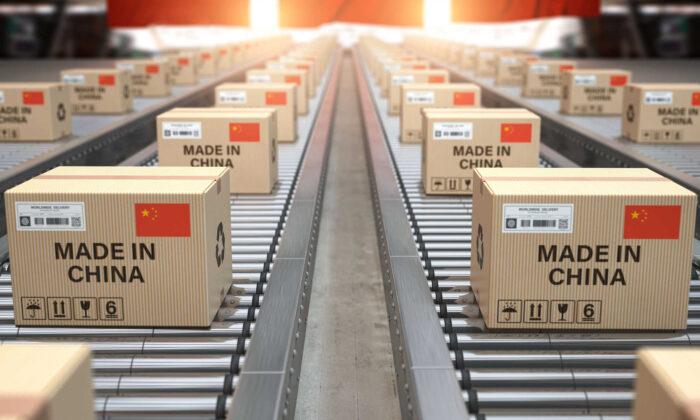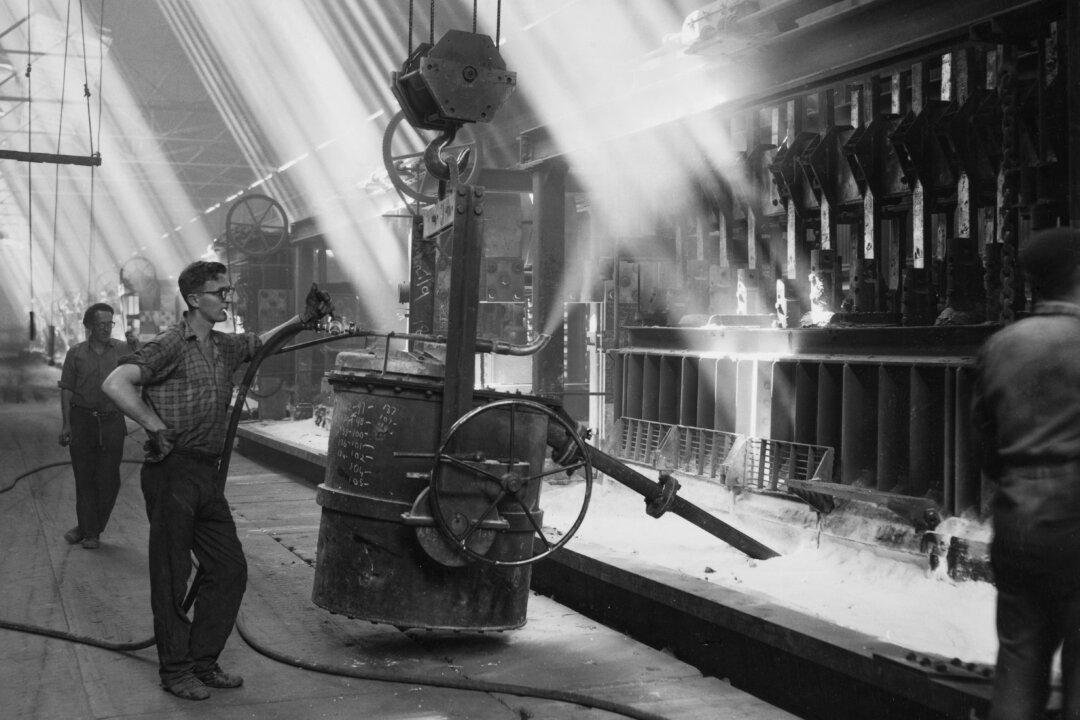This series of events did not occur in a vacuum. The United States and China were in the thick of a fiery trade war, with nearly two years of rounds of claims and counterclaims, fines and retaliations, as well as on and off rounds of negotiations that proved fruitless. There was plenty of carnage on both sides along the way.
Is there a way in which the two fields of battle—the trade row and the virus response—are somehow linked? Was the selling of lockdowns as a virus response its own form of trade retaliation? Many have speculated along those lines.
And there’s another intriguing prospect raised by this stark reality: even while the United States was in the thick of a cruel lockdown that crushed small business and so much of American civic life, trade with China actually began to recover, due mostly to the persuasive gifts of Trump’s son-in-law Jared Kushner. Perhaps this was not an accident.
Let’s review the series of events.
Starting in 2018, President Trump imposed tariffs on trade with China. It was an unusual approach by any postwar standard. Normally presidents past would impose tariffs on goods from any country in the name of protecting domestic industry, or perhaps target a single country on grounds of national security.
This was different—targeting a single country on economic grounds—and it happened because Trump had a list of countries with whom the United States ran a trade deficit, which he saw as proof of how “they” owed “us” money.
So he started at the top of the list (China) and went down (Mexico, Germany, and even Canada). There is no evidence that he fully understood either what it means to have a “trade deficit” or that these policies could not force any other country to pay anything; American consumers and businesses pay the tariffs as another form of taxation to the U.S. government.
In any case, contrary to what Trump promised and expected, Xi Jinping retaliated and made it ever more difficult for the United States to export to or import from China. Consumers and producers on both sides suffered. For a while, the consequences for China were devastating. By October 2018, imports from China to the U.S. fell off a cliff.
Matters became far worse with pandemic lockdowns in the United States, a period during which China had opened up completely. Trump shut down travel to China on Jan. 31, 2020, thinking that this would keep the virus out that had been in the U.S. already six months, and continually referred to the “China virus.” A pathogen from China was something that Trump believed he needed to stop. The result was another blow to U.S.-China trade.
That was the end of U.S.-China trade. But not for long. It quickly recovered and now is back to what it was in dollar terms. This is largely because the United States started buying billions (we don’t know how much exactly but someone should find out) in personal protective equipment (masks, gloves, gowns, plus swabs and everything) from China in March just after lockdowns began.
This began a major recovery in U.S.-China trade.
Here is the graph and it shows all the above in terms of U.S. imports from China.
![(Data: Federal Reserve Economic Data [FRED], St. Louis Fed; Chart: Jeffrey A. Tucker)](/_next/image?url=https%3A%2F%2Fimg.theepochtimes.com%2Fassets%2Fuploads%2F2022%2F10%2F14%2F1-Screen-Shot-2022-10-13-at-1.34.30-PM-1200x939.jpg&w=1200&q=75)
You undoubtedly noticed this during the pandemic. Most of the masks and other things related to equipment came from China. That’s pretty interesting, don’t you think? How the heck did this happen? Trump’s priority of “decoupling” the two countries ended up doing the opposite, at least for a time. Fascinating.
“We needed to ask the Chinese government if they would allow us to purchase supplies, which meant that we needed to address the growing tension between our two governments. As the coronavirus grew from a localized problem in Wuhan into a global pandemic, the president’s rhetoric toward China had grown increasingly antagonistic ....”
What to do? Kushner needed to persuade Trump to relax his attitude toward China trade. That would take some doing.“I went to speak with Trump privately.
“‘Now is not a time to be proud,’ said Trump. ‘I hate that we are in this position, but let’s set it up.’
So there we go: just after U.S. lockdowns, Trump called Xi and Xi told Trump again how great lockdowns were and asked that Trump stop blaming China. Trump agreed to stop the rhetoric and stop claiming the virus was China’s fault. Trade was on again, in the midst of what Trump was told was an emergency. He had already green-lighted a China-style virus mitigation effort. Now he was restarting trade.
Some of the factories making this stuff in China were American factories, particularly one owned by 3M, an American company that had long outsourced its manufacturing to China. Trump called the CEO and asked for their PPE but the management demurred and said China would not allow it. Trump invoked the rarely used Defense Production Act (1950) and said that now 3M had to sell supplies.
“Later, I called [Mike] Roman [3M CEO) and told him that we were sending him a contract for all of 3M’s masks in China.
“‘I can’t sell them to you,’ he said. ‘The Chinese government has taken over my factory and is controlling my distribution.’“‘That’s not your problem anymore,’ I said. ‘It’s our problem. Under the DPA, we technically control your company. We’re going to send you a contract, and federal law requires you to sign it. You can tell the Chinese that you had no choice.’
Kushner doesn’t say what the contract was worth or how many tax dollars were fed to the U.S. company with manufacturing operations in China. But he does say how many masks the United States bought: forty-six million masks per month for the next six months.
“Once Roman saw that we had used diplomacy to work out the situation with the Chinese government, and that we weren’t looking to take the rest of his global supply, he became much more agreeable. In the end, he and 3M became great partners in our effort.”
Looking back, it’s unclear whether and to what extent there really was any crisis at all beyond the hothouse frenzies generated in political circles. In this way, the PPE shortage was like the supposed ventilator shortage: speculations that drove frenzied solutions that ended up looking for a problem to solve. In the case of ventilators, they ended up using them and killing thousands of people. Masks, as we know, ended up being used everywhere but nowhere produced solid evidence of disease mitigation.![(Data: Federal Reserve Economic Data [FRED], St. Louis Fed; Chart: Jeffrey A. Tucker)](/_next/image?url=https%3A%2F%2Fimg.theepochtimes.com%2Fassets%2Fuploads%2F2022%2F10%2F14%2F2-Screen-Shot-2022-10-14-at-6.42.17-AM-1200x938.jpg&w=1200&q=75)
There is a strange way in which U.S. lockdowns and disease panic miraculously healed the U.S.-China trade rift that had been developing for the two years prior. Most “personal protective equipment” and especially masks used during the lockdown period in the United States was imported from China in a deal between Trump and Xi, brokered by Trump’s son-in-law. Trade recovered, beginning with pandemic-related goods.
Following the installation of Biden as president, every American was forced to wear China-made clothing on their faces.







